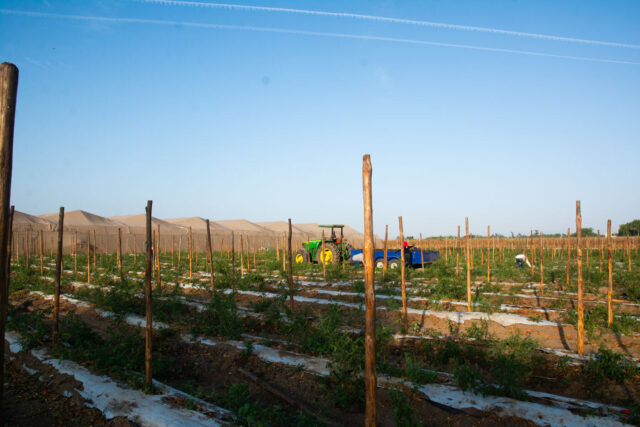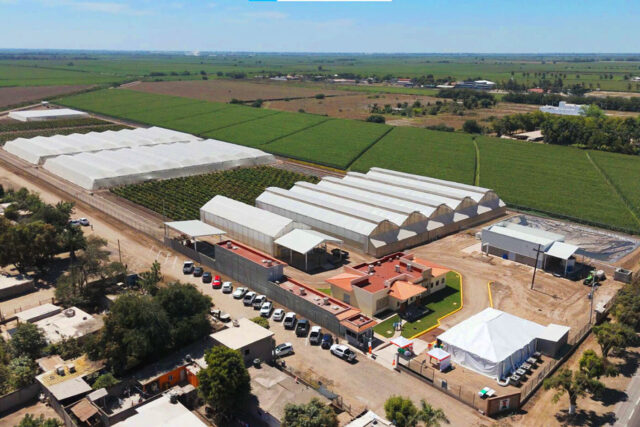Navolato
In veggie paradise
Things are already growing and thriving at our new station in Navolato in western Mexico. We breed vegetable varieties there for the challenging U.S. market.
More than ten hectares for vegetables: our new station in Navolato will continue to grow in the future.
A lemon tree stands in Arturo Rochin Gutierrez’ garden. “It grew from a seed that I once spat into the grass,” says the Administration Manager with a laugh. Victor López Zafra, Farm Manager at our new station in Mexico, adds: “We have a saying here: Eat a vegetable, spit out the seed, and it will grow. Our soil and climate are ideal for many crops, especially vegetables.”
The biggest challenge to begin with was to find a suitable area for the new station. “We needed a piece of land where no vegetables had been grown before in order to avoid soil-borne diseases. And there had to be access to enough water,” says the station manager, describing the early days. “We finally obtained permission to drill our own well” on the plot in Navolato. That meant he and his team were able to start building the station.
Number of employees:
18-45
Size: 10.3 hectares
In operation since: 2022 (inauguration in March 2024)
Activities: Breeding
Crops: Peppers (55%), tomatoes (40%), cucumbers (5%) and soon watermelons and melons
Cultivation in Mexico, export to the U.S.
The station began operating in October 2022; the inauguration was in March 2024. It covers 10.3 hectares, including a large section for open-air cultivation and greenhouses with a total area of 40,500 square meters, which is set to grow by a further 50,000 square meters in the coming years. Moving forward, the team started breeding programs for tomatoes and peppers, as well as carrying out screening activities for cucumbers, melons and watermelons. The varieties are intended for cultivation in Mexico. And all that is worthwhile: The Mexican vegetable market is between 250 and 300 million dollars in size. “We’re in a veggie paradise,” enthuses Victor López Zafra. The vegetables will mainly be exported from Mexico to the U.S.
“When it comes to peppers, our focus is on conventional red, yellow and green ones, jalapeños and snack peppers. As regards tomatoes, we breed hybrids for three segments.” The main emphasis is on quality and disease resistance. “We gear our breeding toward U.S. quality standards, which means the fruit must have the right size, shape, color and taste,” says Victor López Zafra. “The biggest challenge is to breed varieties that deliver the same quality in every growing environment.”


A combined effort
Many hands are involved in breeding: planting, pruning, fertilizing, extracting and cleaning seed – the list of tasks is long. In the peak season, Navolato currently employs around 45 people, including experienced breeders, agricultural experts and seasonal workers. That’s also one of the reasons why the station has been so welcomed by the locals: It offers new job opportunities. But the station has also earned a good reputation for other reasons. As Victor López Zafra notes: “We donate some of the vegetables to neighbors and NGOs, such as a rehabilitation center for addicts and an orphanage. We feel it’s very important to support our local community.” |
This article is from insideKWS, the employee magazine of KWS. If you are an employee of our company, you have access to all other articles and previous issues. |
Dieser Artikel stammt aus der KWSintern, dem Mitarbeitermagazin der KWS. Wenn Sie Mitarbeiterin oder Mitarbeiter unseres Unternehmens sind, haben Sie Zugriff auf alle weiteren Artikel und auf frühere Ausgaben. |
© KWS SAAT SE & Co. KGaA 2025